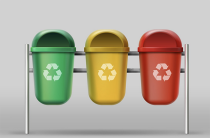Introduction
If you live in Pageant Lake, it’s likely that you’ve seen the area around your home get litterier and dirtier over time. This can be very discouraging, especially for people who want to live in a clean and beautiful neighborhood. But if you have a passion for keeping your community free of litter, it’s possible to organize a neighborhood cleanup event that will benefit not only your home but also all the homes around yours. There is always a cheap skip bins Adelaide in the catchment area where you can dispose your waste.
Site Selection
When you’re looking for a site, consider the following:
- Choose a location that is easily accessible for volunteers. You want to make sure that there are no major barriers to entry and that you won’t need special equipment or tools.
- Choose a location that is safe for volunteers. Avoid locations where there may be hazardous materials or chemicals in the water system, such as an old industrial site or landfill; these areas can contain harmful bacteria or chemicals that could harm people who come into contact with them during cleanup efforts, so it’s important to avoid them altogether if possible!
- Lastly, choose a location easy to clean up after the cleanup has ended so as not to create any more work than necessary!
Cleanup Tools and Supplies
- Gloves—Wear long pants and closed-toe shoes.
- Trash bag—Bring a trash bag for all the waste you collect. You can also use a bucket or any other large container.
- Trowel or shovel—Use this to remove solid waste from areas where it is deposited, such as under shrubs, on rocks, and in between foliage.
- Rake or broom—These are good tools if you’re trying to clean up an area that has more of a surface layer covering the solid waste (for example: gravel). It will allow easier removal of these surfaces by sweeping them away with the rake/broom than with your hands alone without these tools (and without accidentally spreading them). It may be wise to bring both types of these cleaning tools if there is only one available so you can use whichever works best depending on what type of surface coverings are present in your chosen area(s) within Pageant Lake Catchment Area where cleanup efforts need taking place!
Prepare for the Cleanup
- Plan the cleanup for a day when weather is good.
- Plan the cleanup for a day when you can get enough people to participate in the cleanup.
- Make sure you have all of the necessary tools and supplies before you begin. Specifically, make sure that there are enough gloves and vests/jackets for everyone involved in the clean-up (you can always contact your local community center or church if they will let you borrow them). Also, make sure that there are containers to put garbage into, such as bags or boxes. This is not only important because it allows people to work faster but also because it makes cleaning up easier later on! Most importantly: bring along plenty of water!
In addition: make sure there are enough volunteers to do this work – while some people may be able to attend without asking anyone else first (i.e., family members), others cannot afford this luxury so they should ask friends beforehand what days would be best suited towards doing something like this together instead of just showing up unprepared one afternoon with nothing more than enthusiasm!
Tips for Holding a Successful Cleanup Event
Before you begin planning your cleanup event, you should make sure that you have enough volunteers. You can reach out to local organizations who might be interested in helping out, such as the Boy Scouts or the Girl Scouts. You can also ask your friends and family members to help out.
Once you’ve got a good amount of people signed up for the cleanup, it’s time to start thinking about how best to get them down there on time and motivated. Here are some tips:
- Make sure everyone is familiar with their tasks before they show up. If possible, do this by having everyone meet beforehand so they can go over what will happen at the cleanup event (for example: “We’ll be doing trash patrols along these trails; here’s what we’ll do if we find something interesting”).
- Make sure everyone knows exactly where they’re going and why—this includes making sure they know which trail or area needs cleaning most urgently! This will help keep them excited about their work instead of wondering why they’ve been called away from their favorite TV show/computer game/vacation plans. It also ensures less confusion about where each person should go during breaks/lunchtime etc…
- Provide ample water bottles (and snacks) so there’s no need for anyone leave early due to dehydration or hunger pains from being too busy working hard at being lazy (as opposed to actually doing any real work).
After the Cleanup
- Collected garbage and clean-up equipment must be removed from the site.
- If you are in a municipality or area that has a waste management facility, bring your collected waste to that location.
- If there is no facility nearby, arrange for pickup by an approved disposal service.
- If you have no other option than to leave your waste on site, ensure it doesn’t become an attraction for wildlife or cause any environmental damage before you leave the area.
If you can organize a neighborhood cleanup effort, you can help keep your community clean and beautiful.
A neighborhood cleanup effort is a great way to help keep your community clean and beautiful. It can also be a great opportunity for you to meet other people in the area, which will make it easier for you to know who to contact if you ever need help or advice—or even just want someone to talk with.
If you’d like to organize one, start by talking with your neighbors about it. It’s best if everyone agrees on what day and time would work best for everyone involved, but if that’s not possible because of conflicting schedules or other things getting in the way (like vacations), then just pick one date and ask everyone else if it works for them before making any plans.
Once everyone has agreed on when they’ll participate in the cleanup effort, make sure that everyone knows exactly what their role will be; some people may be better suited at litter pickup than others! You’ll need gloves and trash bags as well as plenty of water bottles; make sure each person takes some supplies with them so no one has any excuse not to show up—you should also try encouraging friends from other neighborhoods who live nearby since this could help get even more volunteers interested in helping out!
Conclusion
Cleaning up after a storm is a lot of work, but it can also be rewarding. You’ll feel good about helping others and doing your part to keep our environment clean and healthy. Plus, you may even make some new friends in the process! If you’re interested in planning your own cleanup event or want more information on how to get started with one, contact your local environmental agency or search online for tips on how others have done it before. Good luck! More tips on about taking care your skip bins.


